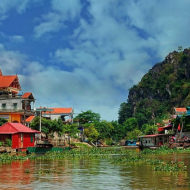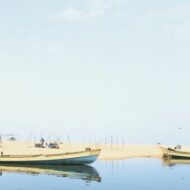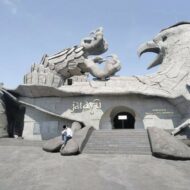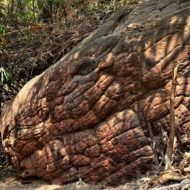The womb is an ancient cave sanctuary, with uncertain dating placed in a wide range from the Stone-Copper Age to the Bronze Age,The site is located near the village of Ilinitsa, in the Tangardak Kaya area, about 12 km northwest of Kardzhali, in southern Bulgaria.
This cave was relatively recently discovered by archaeologists, their scientific research proved that this cave is a Thracian sanctuary dating back to the 11-10th centuries BC.It is called this because of its shape, resembling a woman’s womb.
The entrance to the cave is 3 meters high and 2.5 meters wide. The whole thing is an approx. Cavity 22 meters deep. At the inner end of the cave is an altar carved in stone, one meter high. There is a fissure in the ceiling of the cave, through which the sun can shine inside the cavity for a few minutes every day at noon. However, the altar only reaches the altar at certain times of the year, in winter. Probably the womb of the fertility cult was the uterine-shaped cavity.
this cave has the morphology and relief of the female genital organ. According to historians, the place was used for sacred rituals by the Thracian tribes and thus marked the beginning of the new year.
Access : Coordinates:41.704, 25.248 / The Womb Cave is located in south Bulgaria, near the village of Ilinica and the village of Nenkovo, 12 km northwest of Kardzhali in the Rhodope region.
Highlights :
- According to scientists, the caves of the womb date back to the Stone Age, in the IV millennium BC. Their construction is associated with the cult of female fertility.
- The “sacred cave” of Bulgarian Thrace, which is “fertilized” with the Sun, on December 21, the day when the sun remains motionless.The solstices were an important event in ancient civilizations, always invested in religiosity and worship, and this great location is a timeless reminder of that.
- There is an altar carved in the inner south end of the cave.
Go next : Nenkovo and Dazhdovnitsa villages / village of Ilinica / Kardzhali , a town in the Eastern Rhodopes in Bulgaria.















